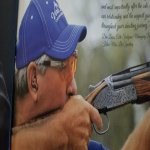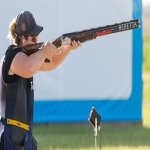I saw a post this morning (that I don't want to hi-jack) - from a member asking for stock fitter recommendations. It got me thinking that a half dozen competent stock fitters working independently with the same gun and shooter, would be likely to come up with quite a range of suggested measurements. It might be fun to discuss the concepts and maybe highlight that theories abound and advice varies widely. If it clicks, maybe this could even be a sticky.
To get us started, Don Currie - chief instructor for the NSCA - recently suggested that Length of Pull, is arguably the most important of all stock dimensions. I wouldn't argue that for a minute, but here's a couple of pictures of shooters who might suggest that the conventional wisdom of about 1 1/2 inches from nose to base of thumb, may be a good starting point, but may not suit everyone.


For those who may not recognize the shooters, google Anthony Matarese and Kim Rhode.
This thread could go anywhere - hopefully respectfully.
To get us started, Don Currie - chief instructor for the NSCA - recently suggested that Length of Pull, is arguably the most important of all stock dimensions. I wouldn't argue that for a minute, but here's a couple of pictures of shooters who might suggest that the conventional wisdom of about 1 1/2 inches from nose to base of thumb, may be a good starting point, but may not suit everyone.


For those who may not recognize the shooters, google Anthony Matarese and Kim Rhode.
This thread could go anywhere - hopefully respectfully.










































































